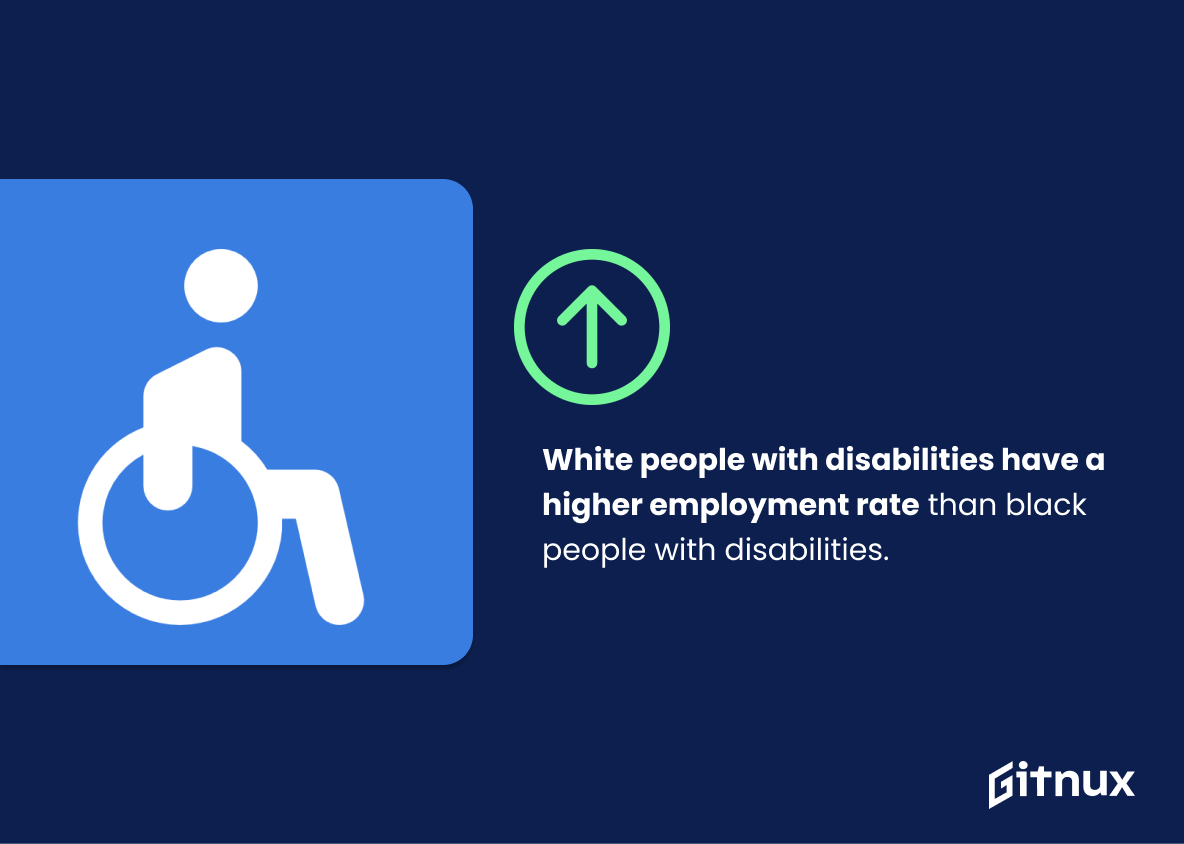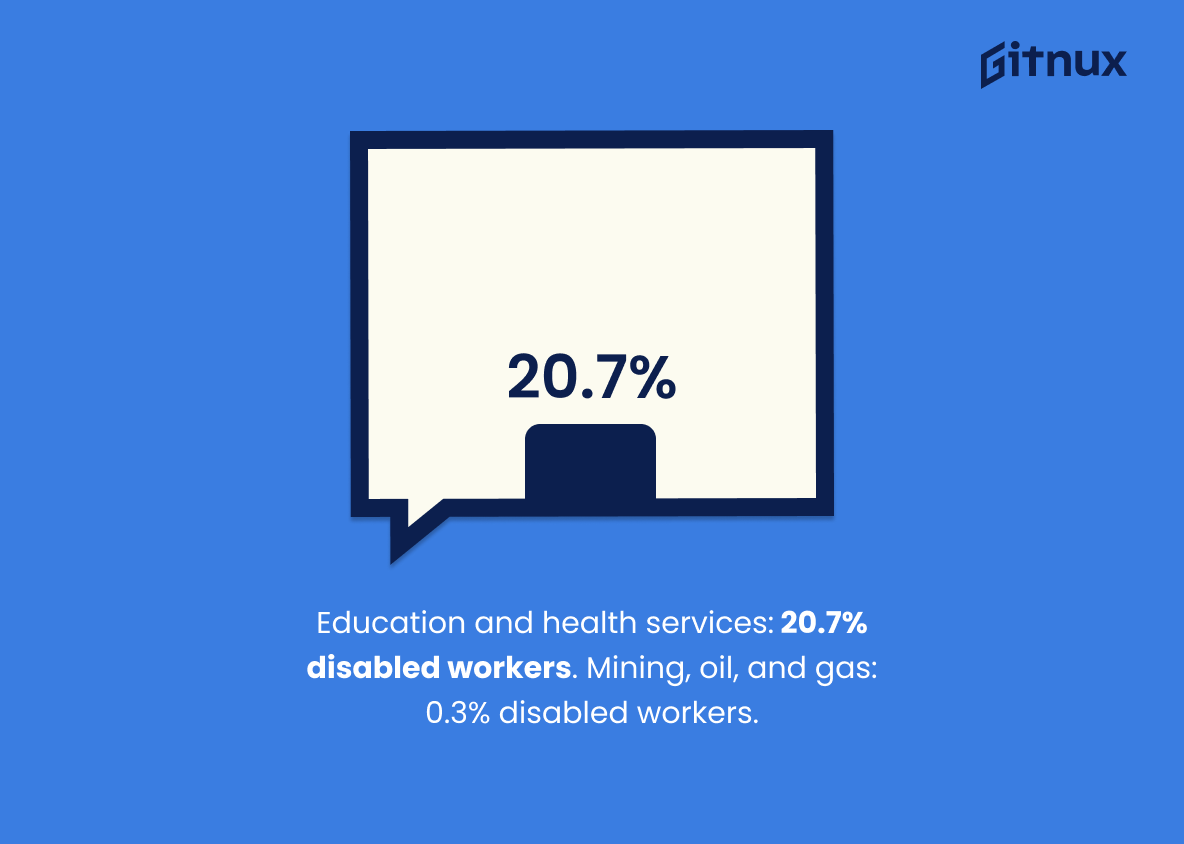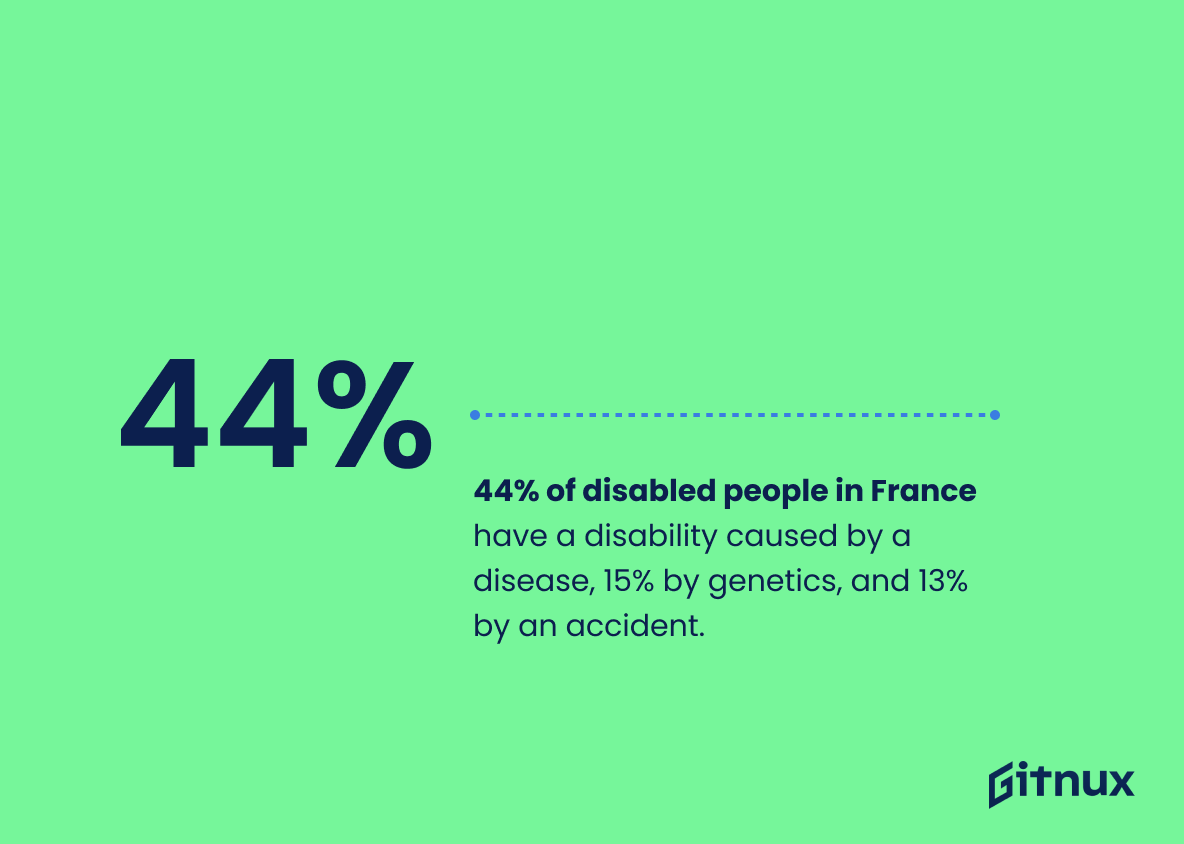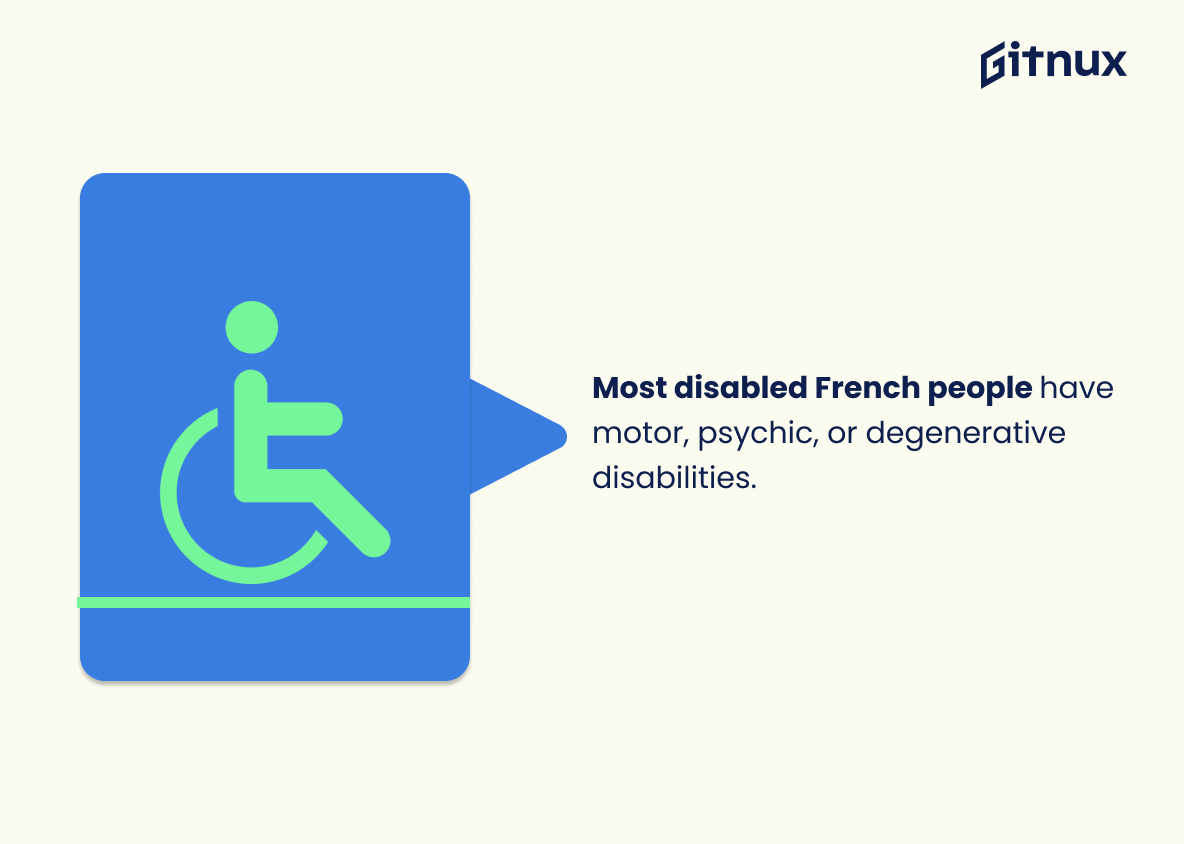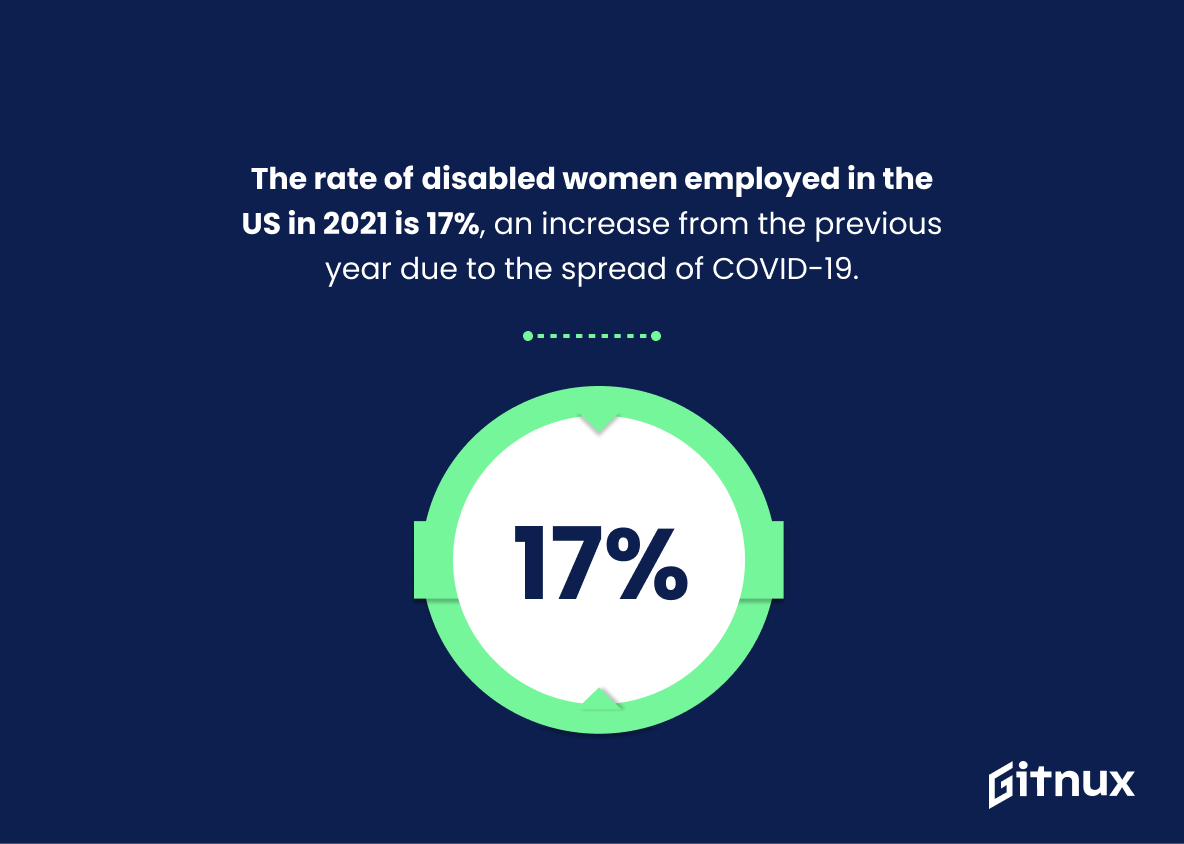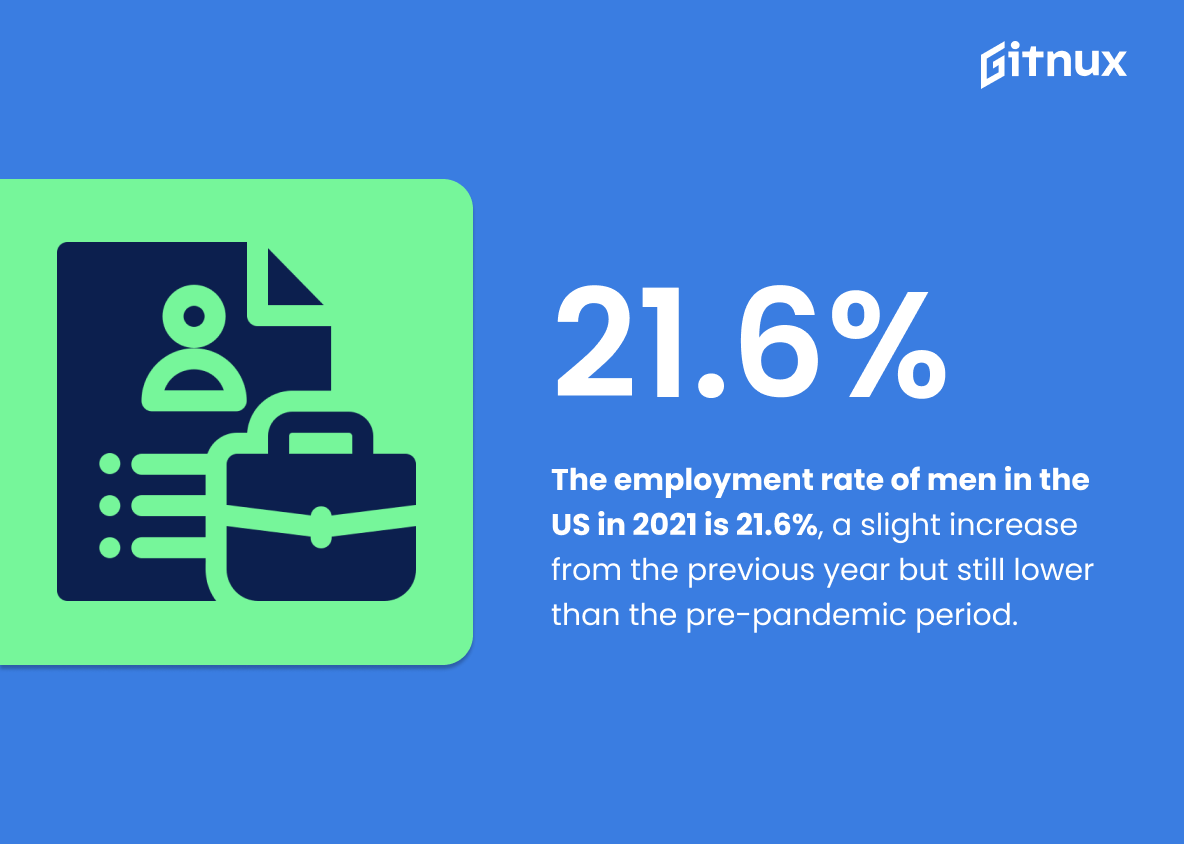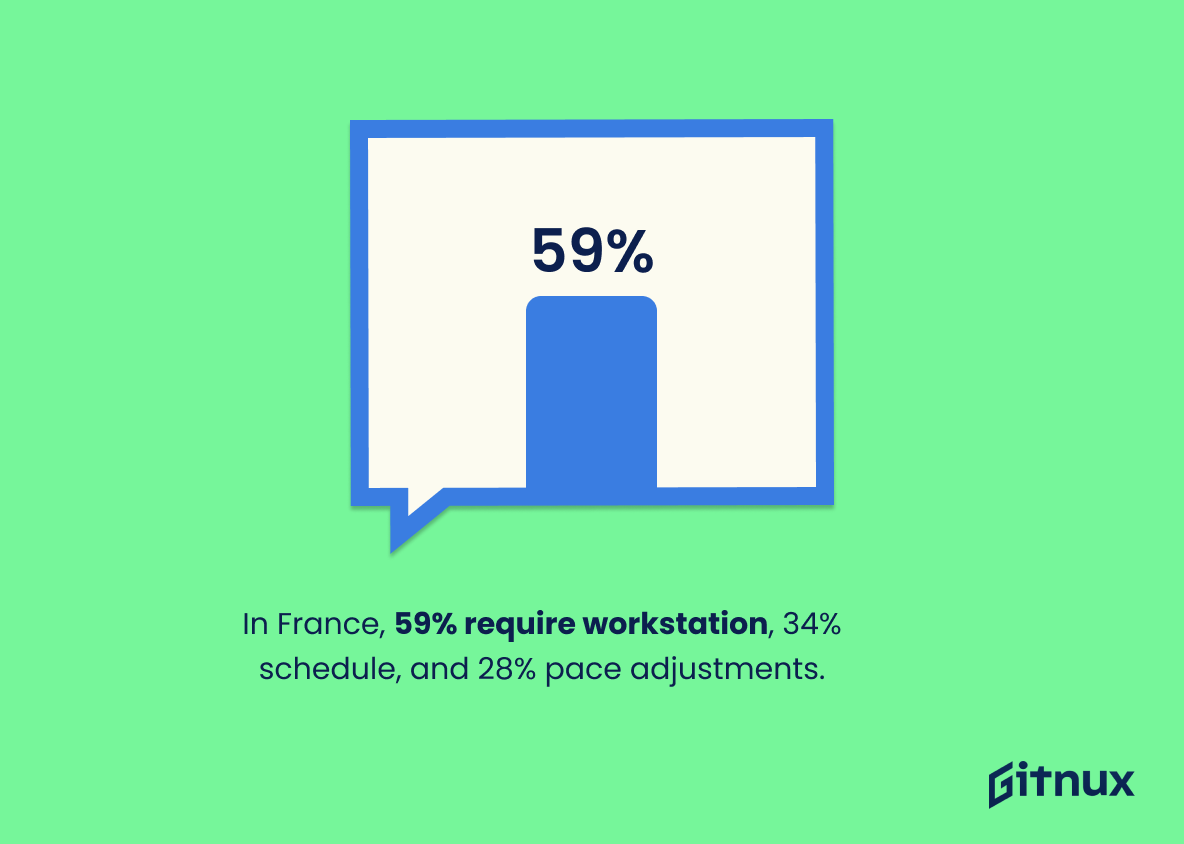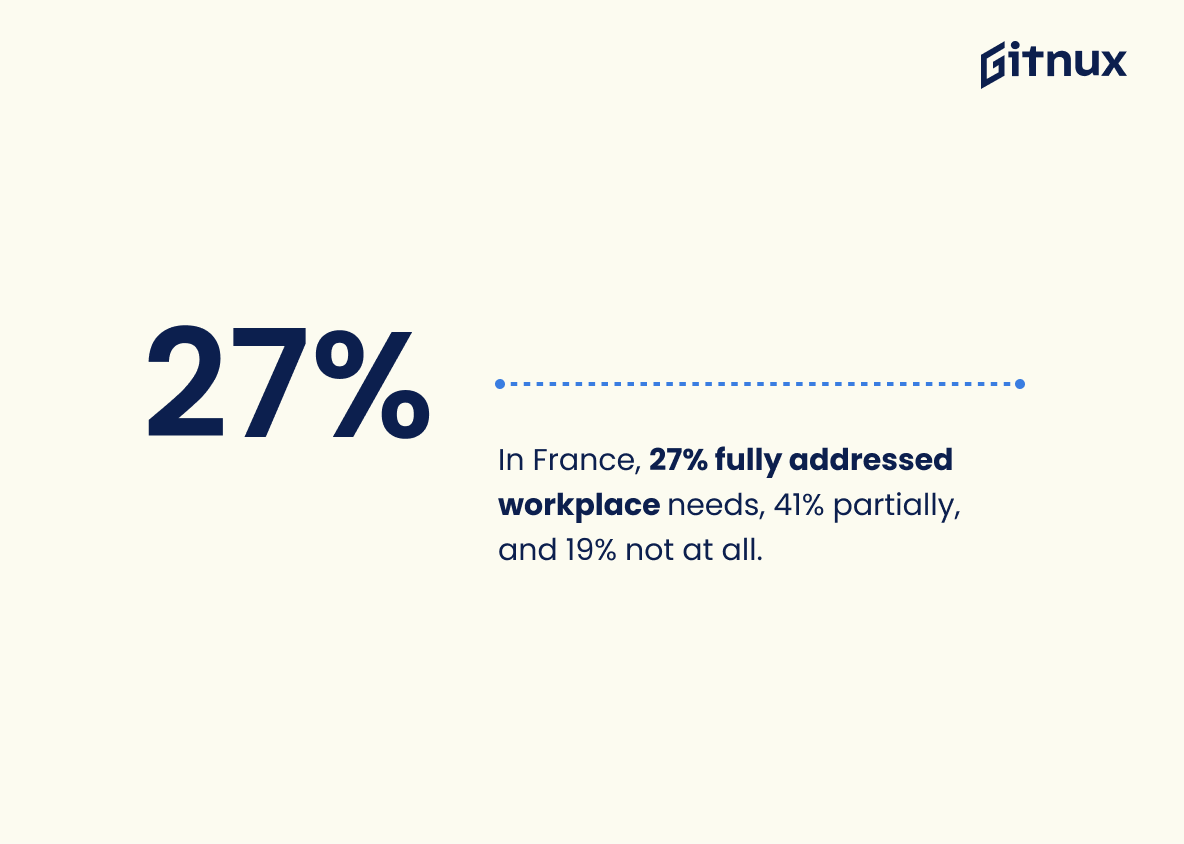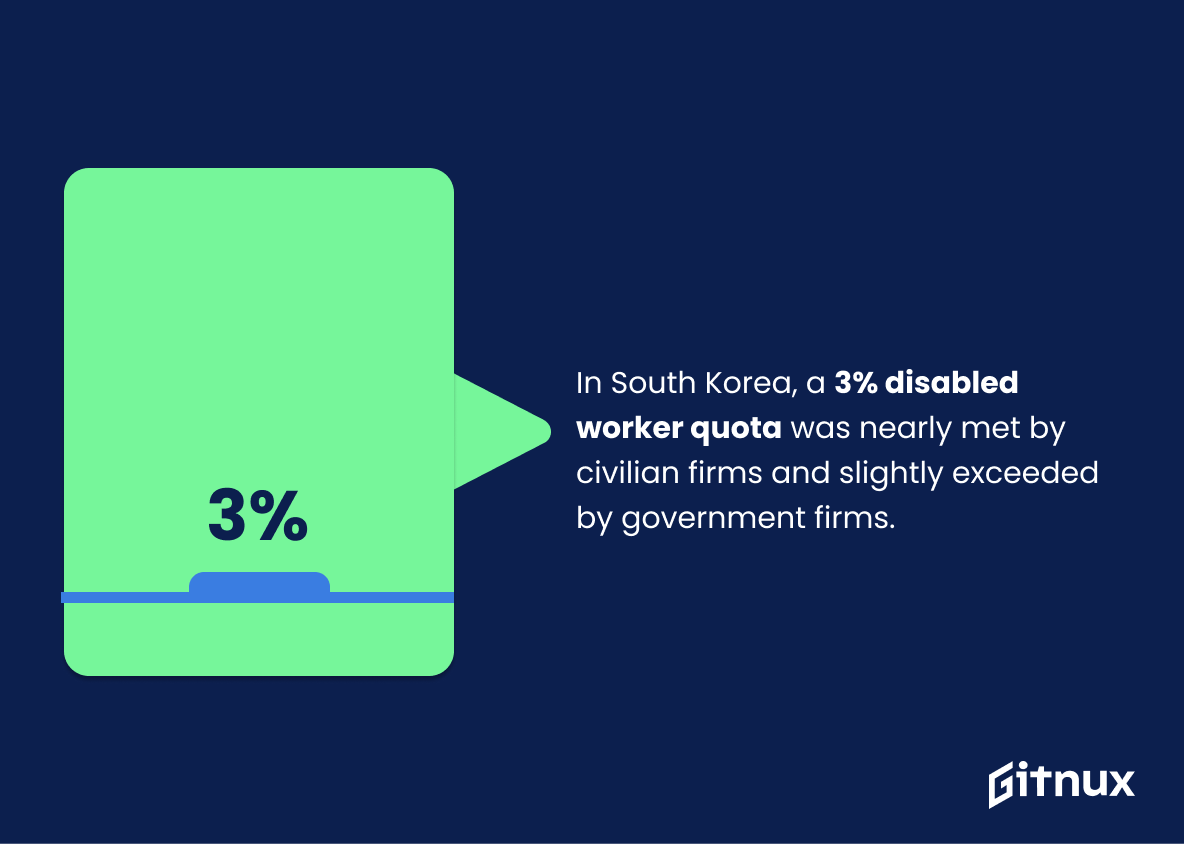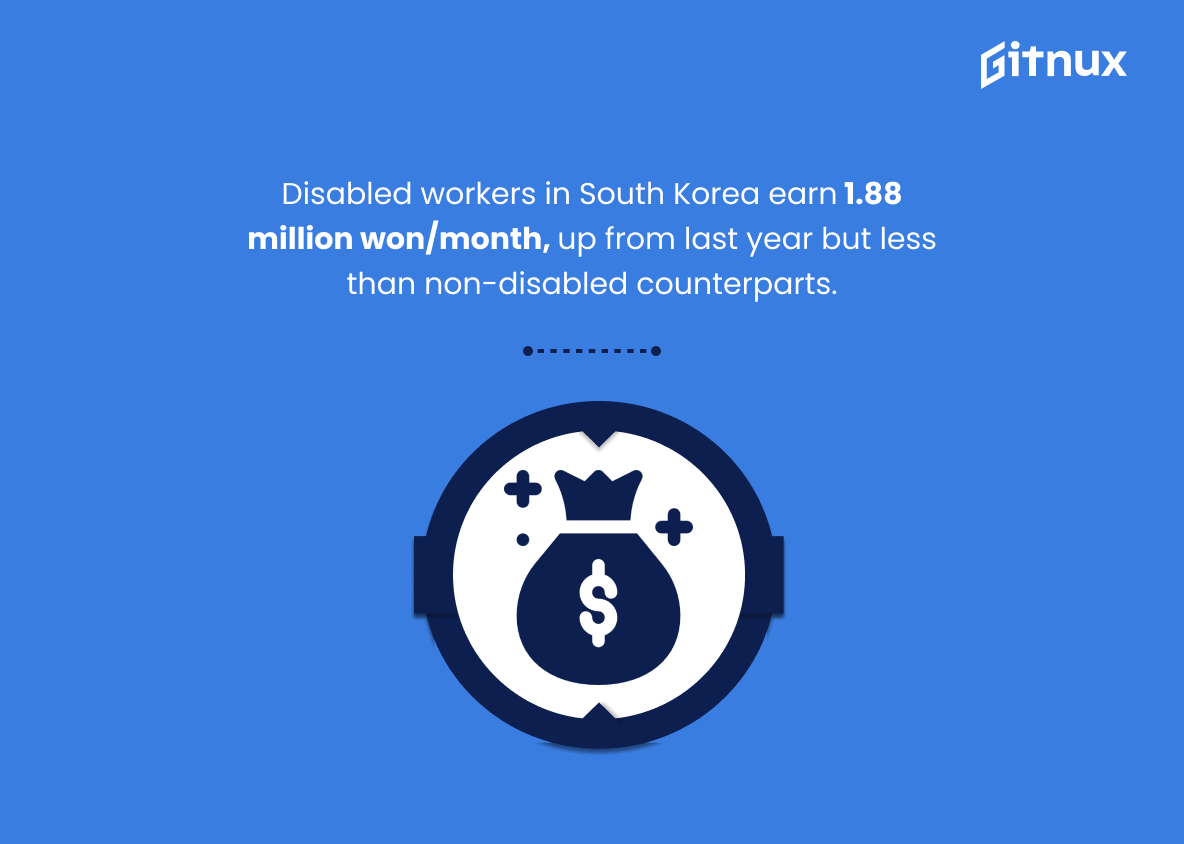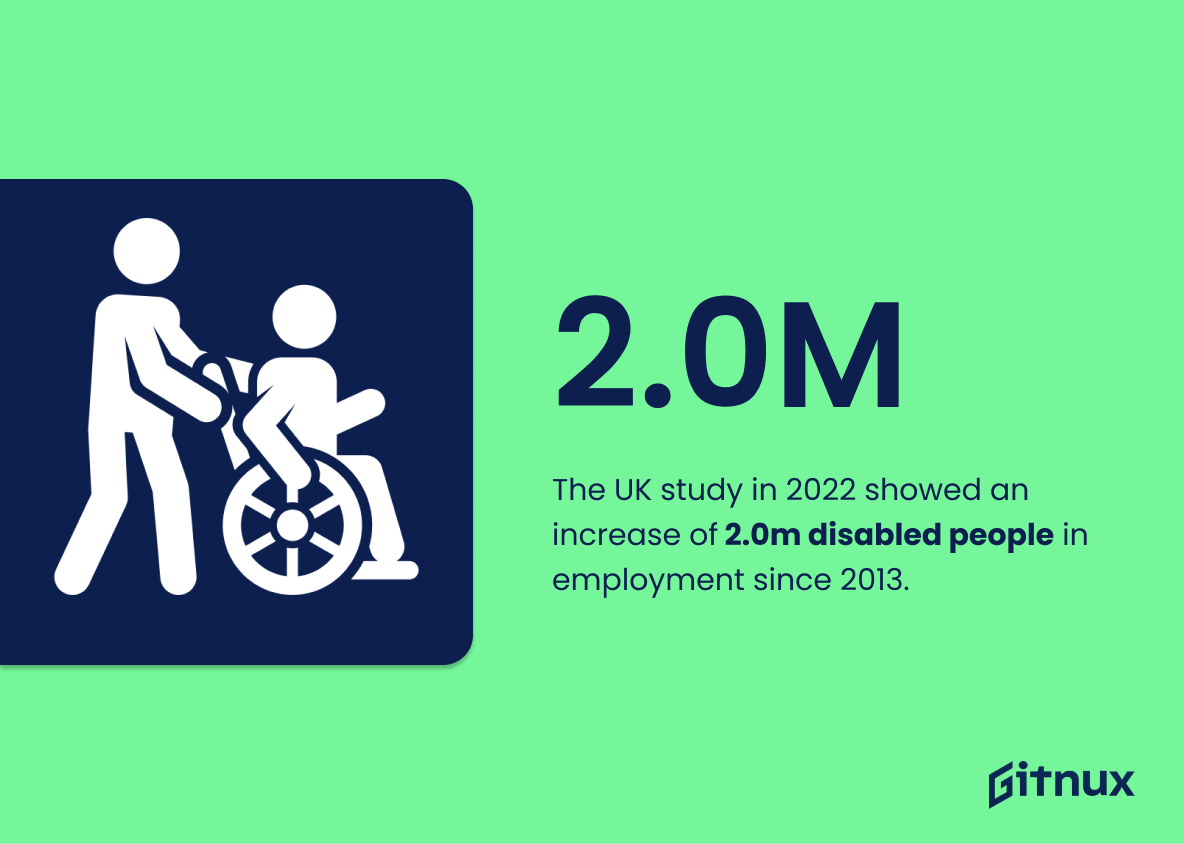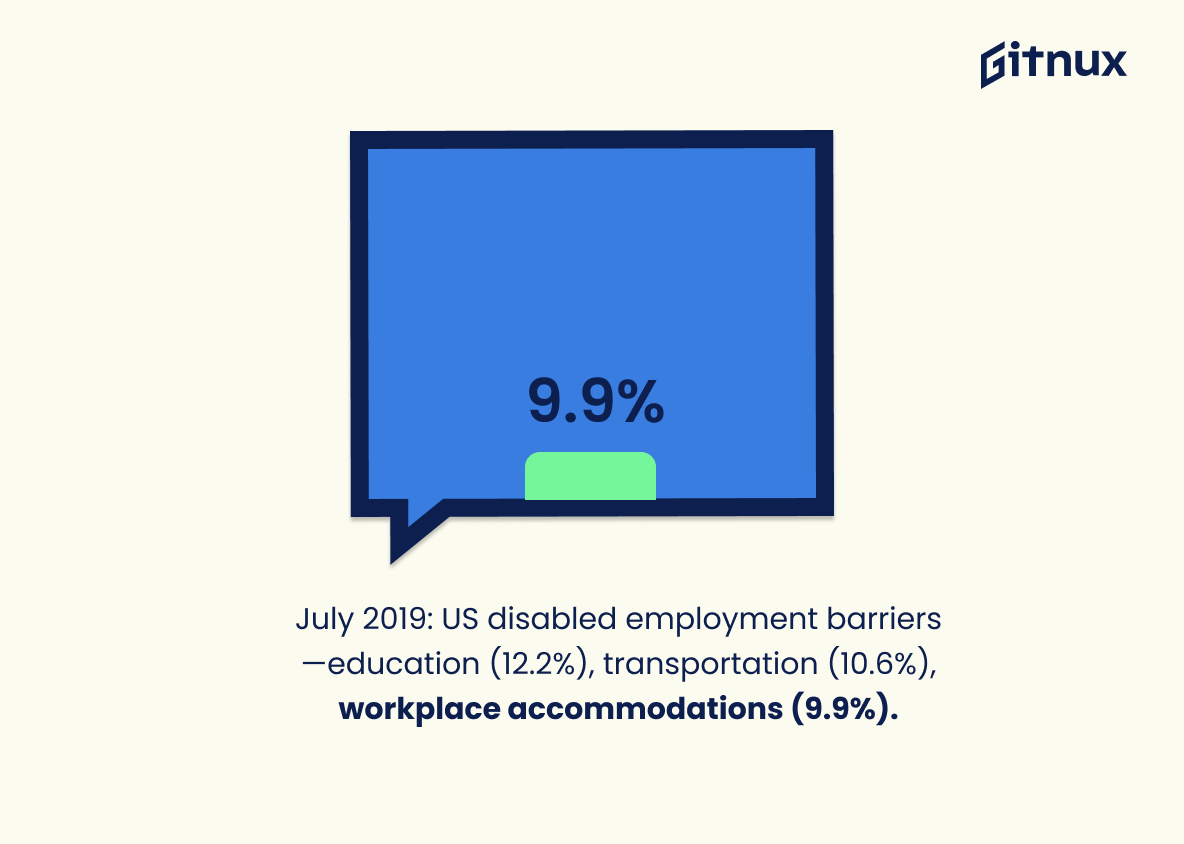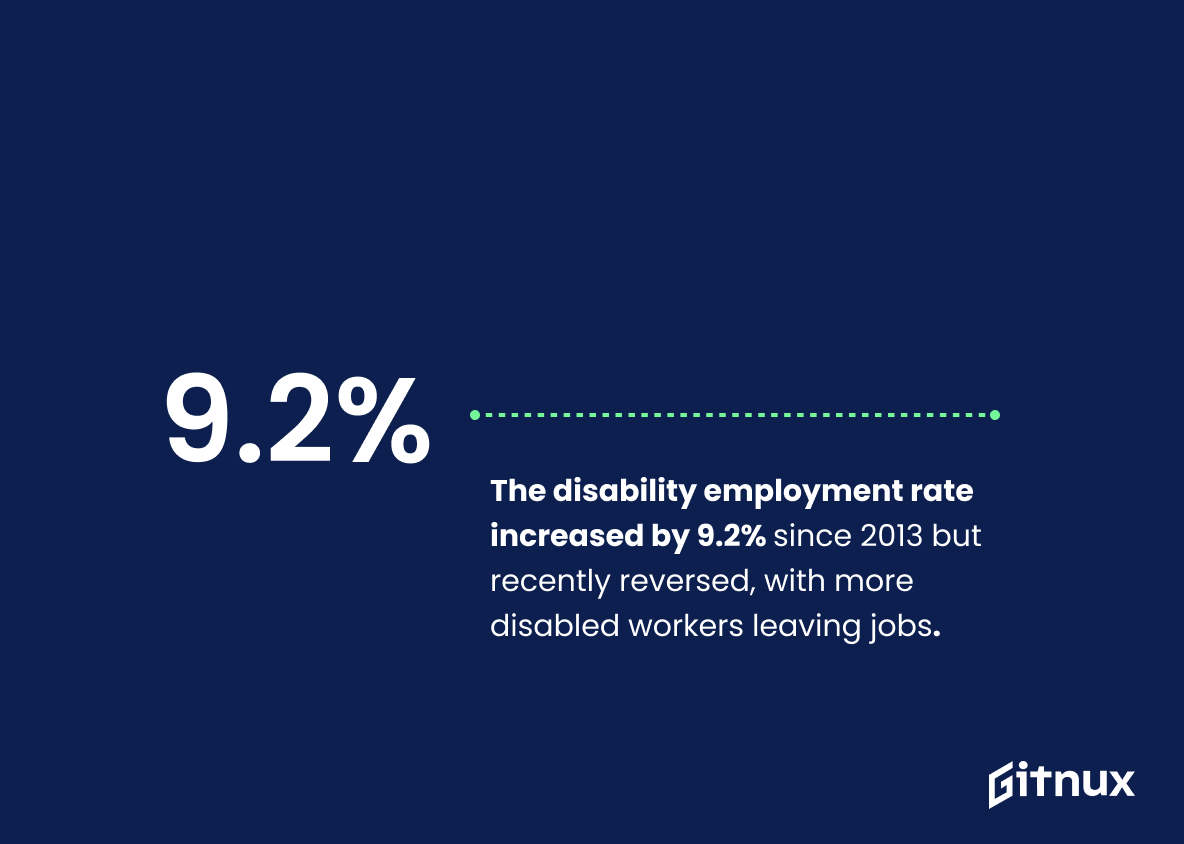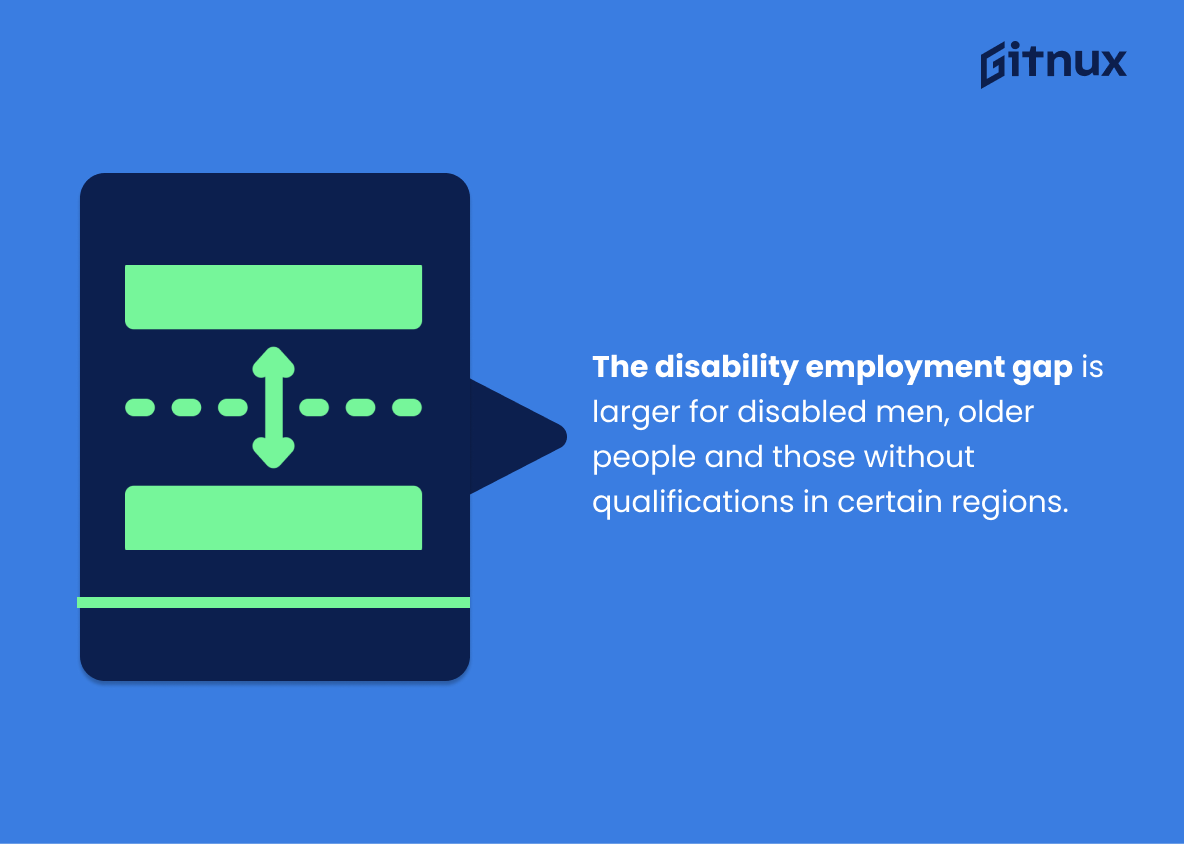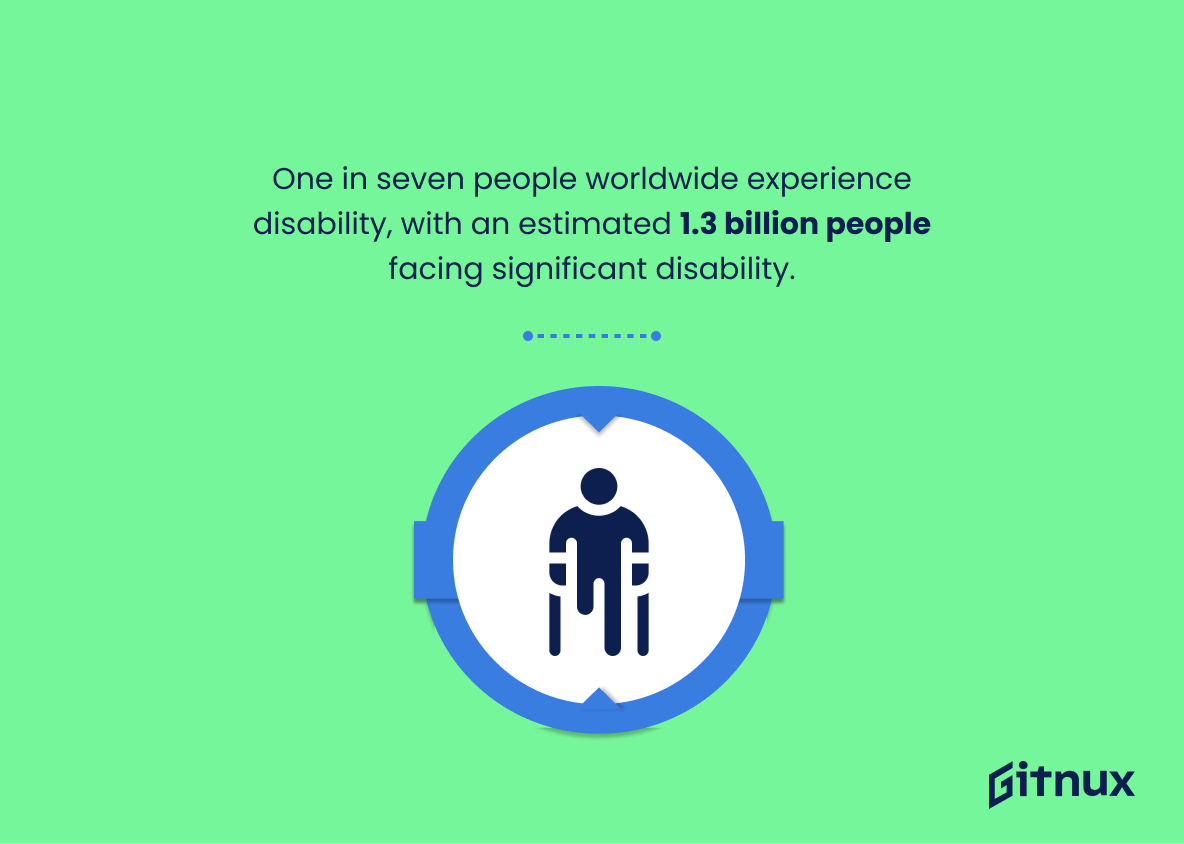Disability employment statistics are an important part of understanding the current state of the job market. They provide insight into the number of people with disabilities who are employed, the types of jobs they hold, and the wages they earn.
This information can be used to inform policies and programs that aim to improve the employment prospects of people with disabilities. In this article, we will explore the current state of disability employment statistics and discuss how they can be used to inform policy and programs. We will also look at some of the challenges that people with disabilities face when it comes to finding and maintaining employment.
Disability Employment: Most Important Statistics
The rate of disabled women employed in the US in 2021 is 17%, an increase from the previous year due to the spread of COVID-19.
The employment of disabled workers in South Korea has increased due to a law requiring at least 3% of disabled workers in every company, with civilian companies reaching an average of 2.9% and governative companies slightly higher.
Disability Employment: Statistics Overview
White people with disabilities have a higher employment rate than black people with disabilities.
This highlights the disparities in employment opportunities for people with disabilities, and the need for more accessible and equitable job opportunities for all people with disabilities.
The education and health services industries had the highest rate of disabled people employed (20.7 percent), while the mining, oil and gas extraction and quarrying industries had the lowest rate (0.3 percent).
This shows the disparities between different industries in terms of the rate of disabled people employed.
It also highlights the need for more inclusive hiring practices in certain industries, such as the mining, oil and gas extraction and quarrying industries.
44% of disabled people in France have a disability caused by a disease, 15% by genetics, and 13% by an accident.
This provides insight into the prevalence of different types of disabilities in France and how they may affect employment opportunities.
Knowing the origin of a disability can help inform policy decisions and provide resources to those with disabilities to help them find employment.
Most disabled French people have motor, psychic, or degenerative disabilities.
This provides insight into the types of disabilities that are most common among disabled French people, which can inform disability employment statistics.
Knowing the types of disabilities that are most common can help to identify areas of need and inform strategies to improve employment opportunities for disabled people.
The rate of disabled women employed in the US in 2021 is 17%, an increase from the previous year due to the spread of COVID-19.
Despite the economic downturn caused by the pandemic, disabled women are still finding employment opportunities.
This is significant because it demonstrates the resilience of disabled women in the face of adversity, and it also shows that employers are becoming more inclusive of disabled people in their hiring practices.
The employment rate of men in the US in 2021 is 21.6%, a slight increase from the previous year but still lower than the pre-pandemic period.
The rate of disabled men employed in the US in 2021 is also 21.6%, higher than the previous year but still lower than the pre-covid era.
The employment rate of disabled men has not been able to recover to pre-pandemic levels, indicating that disabled individuals are still being disproportionately affected by the economic downturn caused by the pandemic.
59% of disabled people in France need workstation arrangement, 34% need schedule adjustments, and 28% need work pace adaptation.
This highlights the need for employers to provide accommodations to disabled people in order to create a more inclusive workplace.
Accommodations such as workstation arrangement, schedule adjustments, and work pace adaptation can help disabled people to be more successful in the workplace.
27% of disabled people in France have had their workplace needs completely addressed, 41% partially addressed, and 19% not addressed at all.
This highlights the need for companies to provide accommodations for disabled people in order to increase their chances of successful employment.
Without these accommodations, disabled people may be unable to access the same opportunities as their non-disabled peers.
The employment of disabled workers in South Korea has increased due to a law requiring at least 3% of disabled workers in every company, with civilian companies reaching an average of 2.9% and governative companies slightly higher.
South Korea is taking steps to increase the employment of disabled workers, which can help to reduce the unemployment rate of disabled people and create a more inclusive workforce.
Disabled workers in South Korea earn around 1.88 million won per month, which is more than the previous year but still less than non-disabled workers.
This statistic is important because it highlights the wage gap between disabled and non-disabled workers in South Korea, which can be used to inform policy decisions and initiatives to promote disability employment.
The UK study in 2022 showed an increase of 2.0m disabled people in employment since 2013.
There has been a positive change in the number of disabled people in employment since 2013, which is a positive step towards reducing the employment gap between disabled and non-disabled people.
This statistic also highlights the need for further action to ensure that disabled people are given equal opportunities in the workplace and are able to access the same employment opportunities as non-disabled people.
The main barriers to employment for disabled people in the US in July 2019 were lack of education or training (12.2%), lack of transportation (10.6%), need for special features at work (9.9%), attitude of employers and co-workers (7.6%), lack of counseling services (5.1%), and loss of government assistance (4.4%).
This highlights the areas that need to be addressed in order to improve disabled people’s access to work.
By addressing these issues, we can ensure better equality in the workplace and positively affect the lives of disabled people.
The disability employment rate has increased by 9.2 percentage points since 2013, however, the trend has reversed in the last two years, with more disabled workers moving out of work than into work.
This difference between disabled and non-disabled people is stark and has significant implications for the employment opportunities of disabled people.
The disability employment gap is wider for certain demographics and type of work, such as disabled men, older disabled people, disabled people with no qualifications, disabled people of White ethnicity, disabled people living in Northern Ireland, Scotland, Wales, North West, and North East.
This highlights the disparities in employment opportunities for certain demographics, which can lead to unequal access to economic opportunities and resources.
One in seven people worldwide experience disability, with an estimated 1.3 billion people facing significant disability.
This highlights the vulnerability of this group to poverty and difficulty overcoming barriers to employment.
This matters in the context of Disability Employment Statistics as it demonstrates the need for greater efforts to support people with disability in finding and maintaining employment.
The employment rate for people with disability is significantly lower than those without disability, with a 31% procurement advantage for able bodied people.
There is a need for more accessible job opportunities and better support for those with disabilities to ensure they are not disadvantaged in the job market.
The disability employment rate has decreased by 0.8 percentage points from 2019 to July to September 2022, despite an overall increase of 9.2 percentage points from 2013 to 2022.
This decrease in disabled worker rates during the pandemic is concerning as it shows that disabled people are more likely to be affected by the economic downturn caused by the pandemic.
This highlights the need for continued support for disabled people in the workplace to ensure that they are not disproportionately affected by economic downturns.
Workers with a disability are more likely to work from home, especially those with higher education, which increases access to work for disabled people and could reduce the impact of pandemics on employment rates.
Home working can be a positive outcome for disability working figures.
The number of people reporting a long-term health condition or classed as disabled is increasing, with an associated rise in mental health conditions.
The number of people with disabilities is increasing, which could lead to an increase in the number of people with disabilities who are unemployed or underemployed.
This could have a significant impact on the economy, as people with disabilities are more likely to be unemployed or underemployed than those without disabilities.
The largest group of long-term disabilities from highest to lowest are: Heart, blood pressure and blood circulation problems, severe disfigurements, skin conditions and allergies, diabetes, chest or breathing problems, asthma and bronchitus, and difficulty in hearing.
While skin conditions may be one of the largest groups of long-term illnesses, sufferers may not find it as debilitating as other conditions such as autism, which can have a greater impact on day-to-day activities.
Conclusion
In conclusion, it is clear that the employment statistics for people with disabilities are still far from ideal. Despite the progress that has been made in recent years, there is still much work to be done to ensure that people with disabilities have equal access to employment opportunities.
It is essential that employers, policy makers, and the public continue to work together to create a more inclusive and equitable workplace for all.
References
1 – https://www.statista.com/statistics/1245158/us-employment-rate-disabled-persons-race/
2 – https://www.statista.com/statistics/1219331/us-share-employment-disabled-persons-industry/
3 – https://www.statista.com/statistics/1198517/origins-people-disability-france/?locale=en
4 – https://www.statista.com/statistics/1198520/types-people-disability-france/?locale=en
5 – https://www.statista.com/statistics/1221044/us-employment-rate-disabled-women/
6 – https://www.statista.com/statistics/1220308/us-employment-rate-disabled-men/
7 – https://www.statista.com/statistics/1197799/specific-adjustments-needed-people-with-disabilities-work-france/
8 – https://www.statista.com/statistics/1197822/french-disabled-people-opinion-implementation-adjustments-work/
9 – https://www.statista.com/statistics/641774/south-korea-disabled-workers/
10 – https://www.statista.com/statistics/641837/south-korea-earnings-disabled-workers/
11 – Employment of disabled people 2022 – GOV.UK (www.gov.uk)
12 – America’s Recovery: Labor Market Characteristics of People with a Disability : Spotlight on Statistics: U.S. Bureau of Labor Statistics (bls.gov)
13 – Employment of disabled people 2022 – GOV.UK (www.gov.uk)
14 – Employment of disabled people 2022 – GOV.UK (www.gov.uk)
14 – 10 Facts on disability (who.int)
15 – America’s Recovery: Labor Market Characteristics of People with a Disability : Spotlight on Statistics: U.S. Bureau of Labor Statistics (bls.gov)
